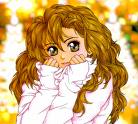KLIM

 |  موضوع: الجهاز الهظمي عند الخيل محاضرة نظرية Digestive system موضوع: الجهاز الهظمي عند الخيل محاضرة نظرية Digestive system  4/4/2011, 05:10 4/4/2011, 05:10 | |
|
Digestive system
Horses and other Equids evolved as grazing animals, adapted to eating
small amounts of the same kind of food all day long. In the wild, the
horse adapted to eating prairie grasses in semi-arid regions and
traveling significant distances each day in order to obtain adequate
nutrition.[2] Therefore, the digestive system of a horse is about 100
feet (30 m) long, and most of this is intestines.
The mouth
Digestion begins in the mouth, which is also called the "oral cavity."
It is made up of the teeth, the hard palate, the soft palate, the tongue
and related muscles, the cheeks and the lips. Horses also have three
pairs of salivary glands, the parotid (largest salivary gland and
located near the poll), submaxillary (located in the jaw), and
sublingual (located under the tongue). Horses select pieces of forage
and pick up finer foods, such as grain, with their sensitive, prehensile
lips. The front teeth of the horse, called incisors, clip forage, and
food is then pushed back in the mouth by the tongue, and ground up for
swallowing by the premolars and molars. [3]
[ The esophagus
The esophagus is about 4-5 feet in length, and carries food to the
stomach. A muscular ring, called the cardiac sphincter, connects the
stomach to the esophagus. This sphincter is very well developed in
horses. This and the oblique angle at which the esophagus connects to
the stomach explains why horses cannot vomit.[3] The esophagus is also
the area of the digestive tract where horses may suffer from choke.
[ The stomach
Horses have a relatively small stomach for their size, and this limits
the amount of feed a horse can take in at one time. The average sized
horse (800 to 1200 lb) has a stomach with a capacity of only four
gallons, and works best when it contains about two gallons. Because the
stomach empties when 2/3 full, whether stomach enzymes have completed
their processing of the food or not, and doing so prevents full
digestion and proper utilization of feed, continuous foraging or several
small feedings per day are preferable to one or two large ones.[3] The
horse stomach consists of a non-glandular proximal region (saccus
cecus), divided by a distinct border, the margo plicata, from the
glandular distal stomach[4].
In the stomach, assorted acids and the enzyme pepsin break down food.
Pepsin allows for the further breakdown of proteins into amino acid
chains.[3] Other enzymes include resin and lipase. Additionally, the
stomach absorbs some water, as well as ions and lipid soluble compounds.
The end product is food broken down into chyme.[citation needed] It
then leaves the stomach through the pyloric valve, which controls the
flow of food out of stomach.[citation needed]
[The small intestine
The horse’s small intestine is 50 to 70 feet (21 m) long and holds 10 to
12 gallons. This is the major digestive organ, and where most nutrients
are absorbed.[5] It has three parts, the duodenum, jejunum and ileum.
The majority of digestion occurs in the duodenum while the majority of
absorption occurs in the jejunum. Bile from the liver aids in digesting
fats in the duodenum combined with enzymes from the pancreas and small
intestine . Horses do not have a gall bladder, so bile flows constantly.
[3] Most food is digested and absorbed into the bloodstream from the
small intestine, including proteins, simple carbohydrate, fats, and
vitamines A, D, and E. Any remaining liquids and roughage move into the
large intestine.
[The large intestine
[ Cecum
The cecum is the first section of the large intestine. It is also known
as the "water gut" or "hind gut." It is a cul-de-sac pouch,[5] about 4
feet (1.2 m) long that holds 7 to 8 gallons. It contains bacteria that
digest cellulose plant fiber through fermentation.[6] These bacteria
feed upon digestive chyme, and also produce certain fat-soluble vitamins
which are absorbed by the horse.[3] The reason horses must have their
diets changed slowly is so the bacteria in the cecum are able to modify
and adapt to the different chemical structure of new feedstuffs.[5] Too
abrupt a change in diet can cause colic, as the new food is not properly
digested.
[ Colon
The large colon, small colon, and rectum make up the remainder of the
large intestine. The large colon is 10-12 feet long and holds up to 20
gallons of semi-liquid matter. It is made up of the right lower
(ventral) colon, the left lower (ventral) colon, the left upper (dorsal)
colon, the right upper (dorsal) colon, and the transverse colon, in
that order.[3] Three flexures are also named; the sternal flexure,
between right and left ventral colon; the pelvic flexure, between left
dorsal and left ventral colon; the diaphragmatic flexure, between left
dorsal and right dorsal colon. The main purpose of the large colon is to
absorb carbohydrates, which were broken down from cellulose in the
cecum. Due to its many twists and turns, it is a common place for a type
of horse colic called an impaction.[5][6]
The small colon is 10-12 feet in length and holds only 5 gallons of
material. It is the area where the majority of water in the horse's diet
is absorbed, and is the place where fecal balls are formed. The rectum
is about one foot long, and acts as a holding chamber for waste matter,
which is then expelled from the body via the anus.[3
| |
|
خالد الرواضيه

 |  موضوع: رد: الجهاز الهظمي عند الخيل محاضرة نظرية Digestive system موضوع: رد: الجهاز الهظمي عند الخيل محاضرة نظرية Digestive system  4/4/2011, 11:20 4/4/2011, 11:20 | |
| اشكر لك اختيارك الامثل تقبلوا خالص تحياتي | |
|





